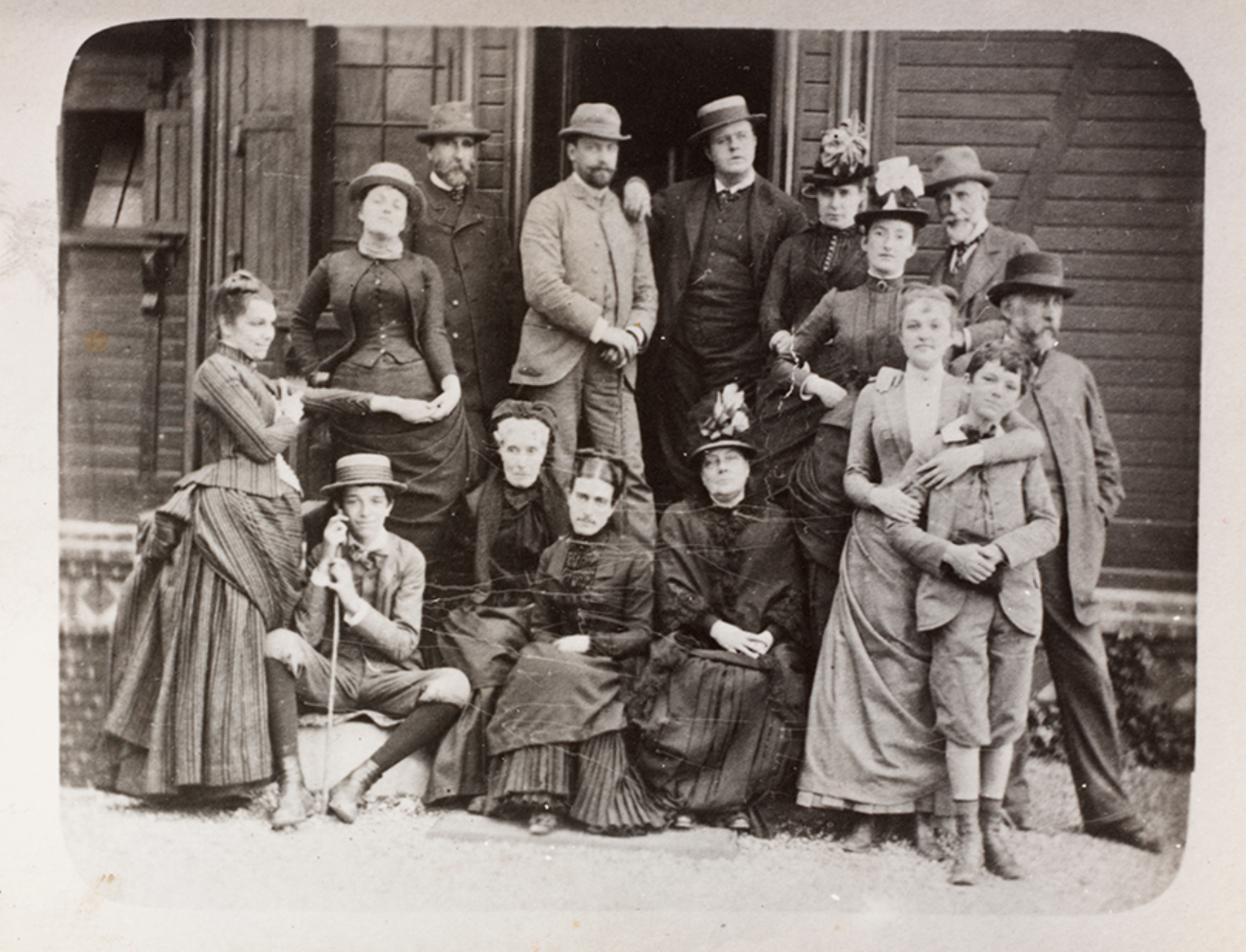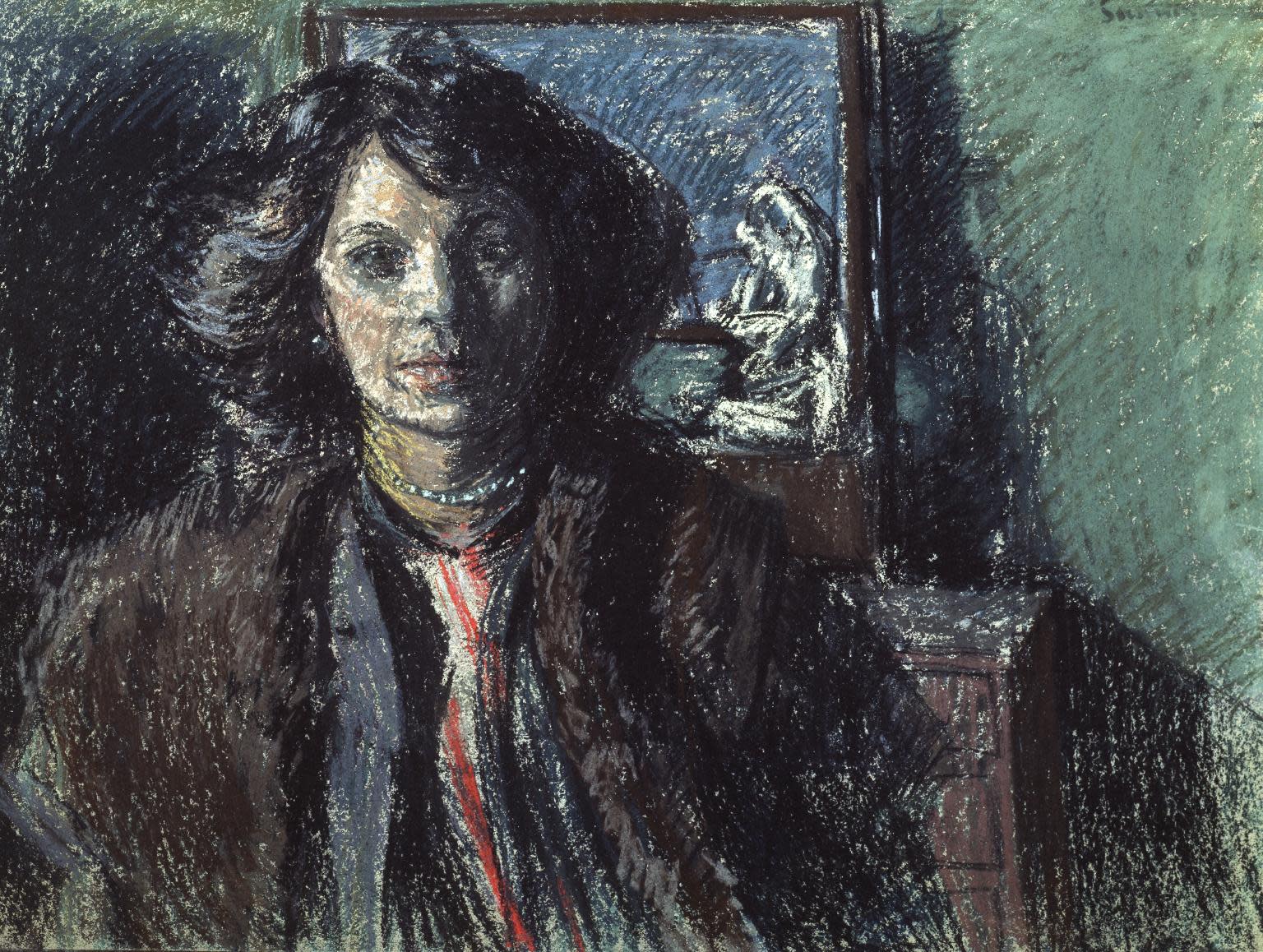Ahead of Piano Nobile’s major exhibition opening next Thursday, SICKERT: The Theatre of Life, InSight considers one of Sickert’s earliest models from his important Camden Town period.
Walter Sickert
Portrait of Mrs Barrett, 1906
After his first marriage failed in 1895, Walter Sickert (1860–1942) forsook England. He had presumably had enough of Liberal politicians and their daughters, preferring instead the respite afforded by his friends in France (his milieu at the time included the painters Edgar Degas and Jacques-Émile Blanche, the poet Paul Valéry, and the writer Ludovic Halévy). His period abroad also gave him time to formulate in his art the distinctive mixture of glamour and seediness which he discerned in the streets and townsfolk of Dieppe, where he settled. In 1905, after a decade painting on the continent, his work usefully purged of overt Whistlerian traits and perhaps feeling ready to make a bravura homecoming, Sickert started acquiring studios in London. Most art historians take this to be the beginning of his famous ‘Camden Town period’.

To begin with, Sickert’s Camden Town paintings developed themes and subjects that he started exploring on painting trips to Venice. Fugitive figures sit or stand in darkened rooms; naked bodies sprawl on unmade beds; items of furniture loom forwards and fill the picture surface, assuming a prominence equal to that of the sitter. Very quickly, however, his London work assumed a new and distinctive quality. To borrow the words of Francis Bacon, the best of Sickert’s work made in Camden Town and Fitzrovia between 1905 and 1914 is characterised by an ‘atmosphere of threat’. In a further twist of the tail, paintings like Mornington Crescent Nude overlay allusions to violence with delicate observations of light and colour.

Few of Sickert’s casual sitters were professional models and little is known about them as individuals. Most were presumably happy to receive a little extra income. Far more than the conceited graces of society people, in paintings such as Portrait of Mrs Barrett Sickert preferred to paint the coarse faces and free manners of London’s many service workers – the charwomen, costers, milkmen, laundry girls, milliners, and so on. As Richard Shone explains in his catalogue entry for SICKERT: The Theatre of Life,
It was long thought that Mrs Barrett was Sickert’s charlady who was also engaged to model for a number of head-and-shoulder figure pieces in 1906. In 1963, Mrs Barrett’s daughter-in-law contacted Lillian Browse to tell her that her mother-in-law had been a dressmaker and had died in the London Temperance Hospital in 1925. This is surely strong evidence that she was not Sickert’s cleaner.

Sickert made several pictures of the elusive Mrs Barrett. He produced five paintings and a number of pastels and drawings that depict her. This small corpus varies wildly: while two of the paintings show her in a severe profile, her eyes hooded and the olive-green wall framing her head (the other profile is in the Courtauld Gallery), the other three paintings depict her from the front with ambiguous expressions. In one, she wears a beribboned hat similar to that discernible in the background of Portrait of Mrs Barrett.

Sickert’s studio at No. 8 Fitzroy Street is readily identifiable by its furniture. The striped sofa which appears in Portrait of Mrs Barrett recurred in other works made in 1905 and ’06, including paintings of Agnes Beerbohm and his two other notable sitters from the time, the Belgian Daurmont sisters. The picture frame which appears at the upper left-hand side of Portrait of Mrs Barrett is the same painting hanging on the wall in Les Petites Belges. Both works suggest a fancy of Sickert’s at the time – a predilection for contrasts of olive green and cherry red. He passed through such periods of obsession throughout his career, his attention being caught variously by a line of books on a shelf, the play of light through a certain Venetian blind, and so on. His willingness to indulge these obsessions was not a sign of weak-minded eccentricity: rather, the works of art that resulted from these ‘visual infatuations’ are evidence of his complicated genius.

Images:
1. Walter Sickert, Portrait of Mrs Barrett, 1906, oil on canvas, 50.8 x 40.3 cm | For Sale
2. Walter Barnes, The Halévy Family and their friends at Dieppe, 1885, RISD Museum (including Sickert and Blanche at the back and Degas at the front right)
3. Walter Sickert, Mornington Crescent Nude, 1907, Fitzwilliam Museum, University of Cambridge
4. London Temperance Hospital, Hampstead Road
5. Walter Sickert, Mrs Barrett, circa 1905, Tate Collection
6. Walter Sickert, Les Petites Belges. Jeanne and Hélène Daurmont, 1906, Museum of Fine Art, Boston


